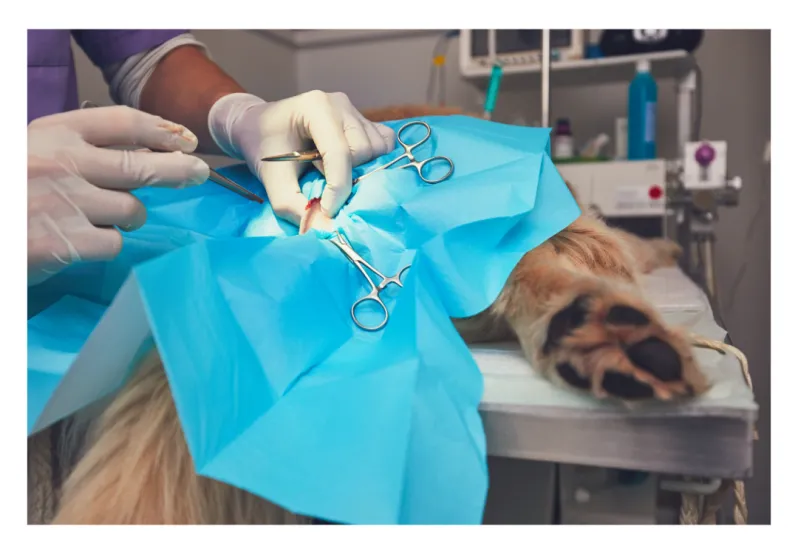Use of magnetic nanoprobes for ablation of canine mammary, skin and subcutaneous tumors
The aim of this study is to perform initial testing for ablation (tumor killing) of mammary or skin tumors through a new noninvasive technology. An injection of magnetic nanoparticles (FDA approved) into the tumor can help concentrate the heat in the tumor to kill the tumor. Ultimately the idea is that this noninvasive technology could be used as an alternative to surgical removal of the mammary or skin or subcutaneous tumor.
Each dog will receive sedation and an ultrasound-guided injection of the tumor with the magnetic nanoparticles, then, after four hours, will have general anesthesia to have the tumor ablated with the novel system. Following the procedure, the dog will be discharged.
At home, owners will measure the tumor size with calipers daily and record the measurements in a diary. On day 14, dogs will return to the clinic for general anesthesia and removal of the mass or tissue where the mass was located, and then the tissue will be submitted for pathology.

Client Compensation:
The costs of the following will be covered as part of the study: sedation and administration of the magnetic nanoprobe, the magnetic nanoprobe, anesthesia for the ablation, and the ablation, a $1461 account credit to cover budgeted anesthesia and surgery costs, and histopathology. In addition, as a study participant, you will be provided with a $500 direct payment to help cover other costs associated with the treatment of the mammary or skin, or subcutaneous tumor.
Potential Medical Benefits:
There are no direct treatment benefits to the dogs participating in this study. The goal is to develop a new technique that may benefit future patients.
Potential Medical Risks:
There are some risks associated with anesthesia and surgery that will be explained by the primary clinician and detailed on the consent form for the procedure. There are also some risks associated with the magnetic nanoprobe injection into the tumor, including allergic reaction, however, this has been used safely in dogs. The risks associated with the ablation procedure include local pain, inflammation, hemorrhage, swelling, or skin burns. It is also possible that damage to close by peripheral nerves/blood vessels could occur (induced by heat produced by the ablation probe). The ablation system can monitor the adjacent tissue temperatures to allow treatment to be stopped if higher temperatures are detected in normal tissues to prevent complications. The dog may experience unexpected side-effects resulting from anesthesia or surgery. It is possible the dog's condition may not improve, or it may worsen. The dogs will be observed closely for side effects, and appropriate medical care will be provided.
What qualifies my pet for enrollment?
Inclusion Criteria:
- Cytologic or histopathologic diagnosis of a skin or subcutaneous, or mammary tumor, minimum size 5mm
Exclusion Criteria:
- Lack of cytologic or histopathologic diagnosis of skin or subcutaneous, or mammary tumor. Size < 5mm or >4cm.
Diagnosis/Condition Being Studied: Skin or subcutaneous tumor and mammary tumors.
Intervention to Be Studied: Noninvasive microwave ablation
PRE-SCREENING QUESTIONAIRE
If you believe your pet may be eligible for this study, please complete a pre-screening questionnaire.